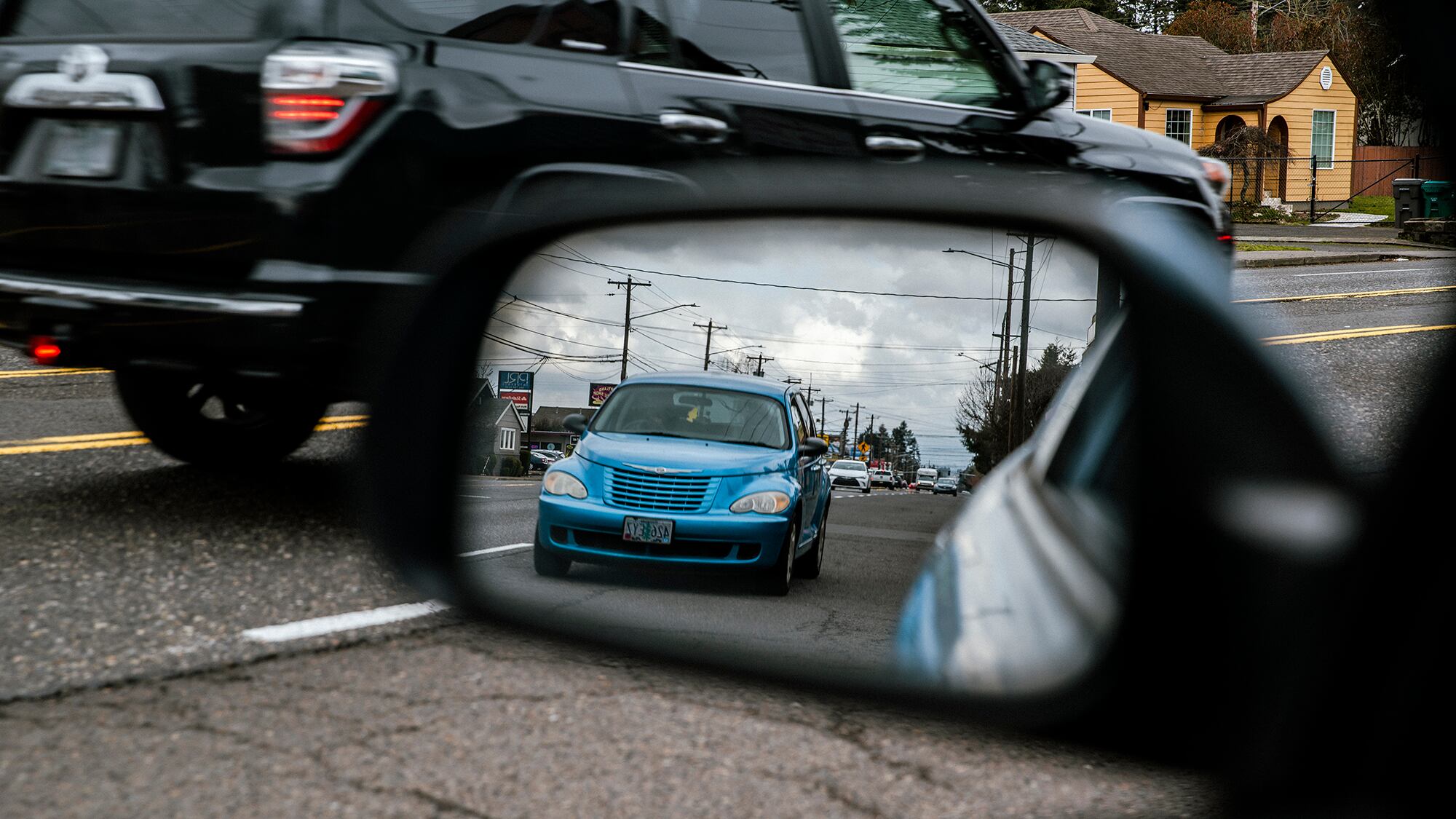Starting next week, drivers in Portland and Seattle will regularly see yard signs, billboards, bus advertisements, and social media posts reminding them to slow down.
The slogan of the new campaign is “Slow the Flock Down,” using state bird-related imagery and bright blue coloring designed by the Seattle Department of Transportation. Launched in partnership with the Portland Bureau of Transportation, the campaign will remind Portland drivers to drive the speed limit while in Seattle, advertising the 25 mph speed limit on most arterial streets.
PBOT has allocated $120,000 for the campaign, which will run over the next two months. The money will come from the city’s cannabis tax, according to PBOT spokeswoman Hannah Schafer.
Both cities are part of the Vision Zero network, a national campaign with 10 “focus cities” launched in 2016 with the aim of eliminating traffic deaths. But the subtle differences in the campaigns highlight a significant policy distinction: Portland does not have a “drive 25″ law as Seattle does. Schafer attributes Portland’s lack of the same rule to a difference in the process for reducing speed limits in the two states. WW has previously examined what critics call a failure by City Hall to aggressively curb traffic speed.
Nationally, according to the U.S. Department of Transportation, 30% of all traffic deaths involve speeding. In Portland, speed is frequently a major factor in traffic deaths. And the timing is more relevant than ever—in 2021, according to Vision Zero Portland, which keeps a dashboard of Portland-area crashes, there were 63 total traffic deaths, the highest number in at least a decade.
Seattle is a Vision Zero city as well, and the program, which tracks crash data to predict and minimize risk factors and aims to end traffic deaths and serious injuries on city streets by 2030. Both cities have been a part of the international Vision Zero network since 2016.
“Crashes aren’t inevitable, is what we’re trying to say,” Schafer says of the overall Vision Zero goal. “We don’t say accidents, we say crashes. And the reason we say that is because a crash is not an accident, a crash is not inevitable.”
Portlanders will have the opportunity to pick up yard signs displaying the new messaging from the Portland Building and a few other locations starting July 18 and at various public events this summer, Schafer says. There will also be billboards in Portland’s 30 highest crash corridors and a campaign on social media.
While this is a public information campaign and therefore it’s more difficult to track its success, Schafer says the initiative is one of several steps that the bureau is taking to reduce deaths and serious injuries from traffic in the city.
“I don’t think anyone would say that a public safety message is the key to ending traffic crashes and fatalities,” Schafer says. “It’s just one piece of the larger education and engineering and other work that we do in the city to help people be safer on our roads.”
